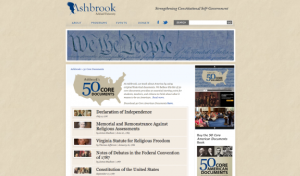 |
February 19, 2016 Volume 22, Number 7 |
Research and Education |
General Interest |
Network Tools |
In the News |
Research and EducationBack to Top | |
 |
|
 |
|
 |
|
 |
|
 |
|
 |
|
 |
|
 |
|
General InterestBack to Top | |
 |
|
 |
|
 |
|
 |
|
 |
|
 |
|
 |
|
Network ToolsBack to Top | |
 |
|
 |
|
In the NewsBack to Top | |
Human Genes Found in Neanderthal Remains | |
|
Humans mated with Neandertals much earlier and more frequently than thought Human DNA found in a Neandertal woman Neanderthals and humans interbred '100,000 years ago' Human Evolution by the Smithsonian Institution's Human Origins Program National Geographic: The Genographic Project: Neanderthals Humanity's Best Friend: How Dogs May Have Helped Humans Beat the Neanderthals Early humans and their Neanderthal cousins shared geographical space in the continent that we now call Europe for tens of thousands of years, performing a complex dance of competition, interbreeding, and possibly even cooperation. The details of their relationship, however, still remain unclear. Timelines of migration and other basic demographics are hard to establish. So when scientists published a new paper in Nature this week, claiming that they had found evidence of interbreeding from about 110,000 years ago (about 50,000 years earlier than previous evidence suggested), it created an immediate media impact. According to study author Adam Siepel, these findings may challenge previously held theories about human migration. In fact, the idea that humans departed Africa in a single major wave about 50,000 or 60,000 years ago may be incorrect. Whatever scientists conclude about this new evidence, it is an exciting new development in the story of how humans occupied Europe, and the rest of the world. [CNH] The first three articles, from Science Magazine, Science News, and the Science & Environment section of BBC News, all cover this groundbreaking discovery and offer links to previous articles about the complex relationships between the Neanderthal and human populations in the prehistoric age. The fourth link navigates to an excellent page on human evolution from the Smithsonian National Museum of Natural History. Here readers will find tabs explaining Human Evolution Research, Human Evolution Evidence, and Human Characteristics, as well as a multimedia section with audio recordings, slideshows, and videos about human evolution. Next, National Geographic's Genographic Project presents an interesting history of Neanderthals, starting with the discovery of the first Neanderthal bones in Dusseldorf, Germany in 1856 and taking readers through the further discoveries that established Homo neanderthalensis as a unique species. The final link navigates to a 2012 article from the Atlantic in which journalist Megan Garber explains anthropologist Pat Shipman's theory that humans displaced Neanderthals, at least in part, by domesticating dogs. | |





